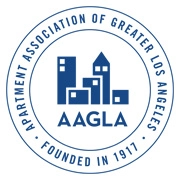Disaster preparedness is essential to managing rental properties, especially in regions like Orange County, where natural disasters such as earthquakes and wildfires are prevalent. The consequences of being unprepared can be devastating, affecting the physical property and the safety and well-being of tenants. Rental property managers are there to make sure properties are ready to face potential disasters. With proactive planning and regular maintenance, they can safeguard their investments and provide peace of mind to their tenants.
Assessing Potential Risks Unique to Your Rental Properties
The first step in disaster preparedness is assessing potential risks unique to your rental properties. Identifying common regional disasters is crucial. For instance, in Orange County, rental property managers must consider the risks of earthquakes, wildfires, and floods. Evaluating property vulnerabilities involves inspecting the building’s structural integrity, location, and the surrounding environment. Prioritizing these risks based on their potential impact will help formulate a targeted preparedness strategy.
Creating a Comprehensive Emergency Plan
A comprehensive emergency plan is vital for effective disaster preparedness. This includes developing evacuation routes tailored to each property ensuring all tenants know the safest exits. Establishing clear communication protocols is also essential. Managers should have an efficient system for notifying tenants about emergencies and updates. Preparing emergency kits for tenants can make a significant difference. These kits should include first-aid supplies, flashlights, batteries, and essential documents. A well-crafted emergency plan guarantees everyone knows what to do and where to go during a disaster.
Movers and Safety
In the event of a disaster, movers are essential in facilitating the safe and efficient relocation of tenants. Partnering with reputable professionals with a lot of experience ensures that you and your tenants can move their belongings quickly and safely. If you are in an area that might experience extreme weather conditions, like Orange County, experienced movers, Affordable Reliable Moving Company Orange County is a good option for fast moves. They are equipped to handle relocations quickly and efficiently, providing property managers and tenants peace of mind. Having a reliable moving company as part of the emergency plan provides a simple transition during chaotic times.
Regular Property Maintenance and Inspections
Regular property maintenance and inspections are fundamental to disaster preparedness. Scheduling routine inspections allows property managers to identify and fix vulnerabilities that could be exacerbated during a disaster. This includes checking the building’s structural elements, such as the roof, foundation, and support beams. Maintaining emergency equipment like fire extinguishers, smoke detectors, and emergency lighting is also important. Keeping the property in top condition prevents damage and warrants tenant safety.
Educating and Engaging Tenants in Preparedness Efforts
Educating and engaging tenants in preparedness efforts is a proactive approach to disaster management. Conducting tenant meetings and drills helps ensure everyone knows the evacuation procedures and safety protocols. Providing educational materials such as brochures, checklists, and online resources can further enhance their preparedness. Encouraging tenants to create their own emergency plans and kits promotes a culture of safety and readiness within the property. An informed tenant is more likely to respond effectively during a disaster.
Collaborating with Local Authorities and Emergency Services
Building relationships with local agencies certifies that rental property managers are well-informed about community emergency plans and resources. Understanding the community emergency plans helps in aligning the property’s emergency procedures with local protocols. Participating in local disaster preparedness events can also enhance knowledge and readiness. These collaborations provide a coordinated and effective response during emergencies.
Financial Planning for Disasters: Insurance and Reserves
Financial disaster planning involves reviewing and updating insurance policies and setting aside emergency funds. Reviewing insurance policies regularly ensures that the property has adequate coverage for different types of disasters. Setting aside emergency funds can help cover unexpected expenses related to disaster recovery and repairs. Also, understanding disaster relief options available from federal, state, and local agencies can provide financial assistance in the aftermath of a disaster. Proper financial planning mitigates the economic impact of disasters on rental properties.
Leveraging Technology for Real-Time Updates and Communication
Using property management apps can simplify communication between managers and tenants. These apps can send alerts and updates about potential or ongoing disasters. Setting up alert systems that provide real-time information from local authorities so that tenants receive timely and accurate updates. Tracking and sharing real-time information can make a significant difference in disaster response and recovery efforts.
Securing Tenants’ Belongings
Ensuring tenants’ belongings are safely and efficiently moved to a secure location is important in the wake of a disaster. Here, the role of furniture movers in Orange County comes in handy. Professional movers are trained to handle urgent relocations, minimizing damage to furniture and personal items. When establishing a partnership with reliable furniture movers, property managers can offer their tenants an added layer of support, making sure that their possessions are protected and that their transition during emergencies is as simple as possible. This proactive step enhances tenant satisfaction and underscores the manager’s commitment to comprehensive disaster preparedness.
Post-Disaster Recovery and Tenant Support
Post-disaster recovery requires a focused approach to assessing and documenting property damage. This step is essential for insurance claims and repairs. Communicating with tenants about the status of repairs and providing timelines helps manage expectations. If needed, providing temporary housing solutions for tenants is an essential aspect of tenant support. Ensuring tenants have a safe place to stay during repairs reflects a commitment to their well-being. A structured recovery plan aids in a quicker return to normalcy for the property and its tenants.
Continuous Improvement: Evaluating and Updating Your Disaster Plan
Disaster preparedness is not a one-time effort. Regularly reviewing and updating plans based on new information and experiences is important. Learning from past incidents and incorporating tenant feedback ensures that the emergency plan evolves and improves over time.
Summary: The Role of Rental Property Managers in Disaster Preparedness
In conclusion, rental property managers play a pivotal role in disaster preparedness. From assessing risks and creating comprehensive emergency plans to educating tenants and leveraging technology, their efforts are essential in upholding the safety of properties and tenants. Continuous improvement and collaboration with local authorities enhance these efforts, providing a robust framework for disaster management.









